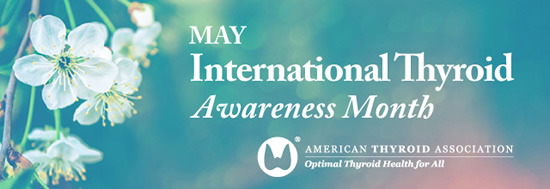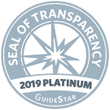
Clinical Thyroidology for the Public summarizes selected research studies discussed in the previous month’s issue of Clinical Thyroidology, an official publication of the American Thyroid Association. Editor-in-chief, Alan Farwell, MD, FACE
Volume 18 Issue 5
Available in pdf format for saving and printing and Web page format for viewing online
PDF Format for Saving and Printing
Clinical Thyroidology for the Public Volume 18 Issue 5 (PDF file, 2.24 MB)
TABLE OF CONTENTS – Web Format
THYROID CANCER
Evaluating the challenges to thyroid cancer care in rural areas
People who live in rural areas of the United States and Canada, generally receive less health care, including both general and specialized care, than people living in urban (city) settings. The authors of the study presented here seek to understand the challenges for surgeons who work in rural settings in providing thyroid cancer care to people living in rural areas. In so doing, they hope to better understand why such people are less likely to receive care for thyroid cancer, and why, when care is received, this happens later in the course of disease compared to people living in cities.
Huston-Paterson HH et al. Closing the distance: a qualitative study to identify equitable innovations for rural thyroid cancer treatment. Am Surg. Epub 2024 Dec
GRAVES’ DISEASE
Does radioactive iodine therapy for Graves’ disease increase the risk for thyroid cancer?
While studies have demonstrated a link between radioactive iodine therapy treatment for thyroid cancer and a slight increased long-term risk for other cancers in the body, a much lower dose of radioactive iodine therapy is used in the treatment of Graves’ disease. A few studies have looked at the association between radioactive iodine therapy for hyperthyroidism and long-term cancer risk and the results are variable. This study specifically reviews the risk of identifying thyroid cancer in patients with Graves’ disease who underwent thyroid surgery and compares the data between patients who previously received radioactive iodine therapy and those who did not.
Ramesh S, et al. Malignancy risk associated with radioactive iodine therapy for Graves’ disease. Am J Surg 2024;241:116075; doi: 10.1016/j.amjsurg.2024.116075. PMID: 39546855.
HYPOTHYROIDISM
What is the effect of age on the frequency of subclinical hypothyroidism?
Subclinical hypothyroidism is present in 19.09% of the population over the age of 70 years. It is unclear if this represents a disease that should be treated or a variant related to normal aging. In this study, the authors examined the changes in thyroid function and thyroid antibodies in the older population, and whether it affects the diagnosis of thyroid disease.
Razvi SS et al. Changes in thyroid function and autoimmunity in older individuals: longitudinal analysis of the Whickham cohort. J Clin Endocrinol Metab. Epub 2024 Dec 14:dgae875; doi: 10.1210/clinem/dgae875. PMID: 39673773.
HYPOTHYROIDISM
Why do we keep thyroid hormone going when it might be time to stop?
Levothyroxine is the 4th most prescribed medication in the United States. While most patients on thyroid hormone have hypothyroidism, many prescriptions appear to be written for individuals without strong indications for therapy. Deprescribing means stopping or lowering a medication when it might no longer be needed or could even cause harm. The researchers wanted to find out why doctors don’t always discuss deprescribing levothyroxine with older patients and what helps them when they do.
Moretti B, et al. Physician-reported barriers and facilitators to thyroid hormone deprescribing in older adults. J Am Geriatr Soc. Epub 2024 Oct 11; doi: 10.1111/jgs.19219. PMID: 39392046.
THYROID CANCER
Is it safe to do a smaller surgery for thyroid cancer by only removing part of the thyroid and nearby lymph nodes?
Thyroid cancer is common has an excellent prognosis because we have very effective therapy, starting with thyroid surgery. This study looked at people with papillary thyroid carcinoma that had spread a little to nearby lymph nodes on one side of the neck. They determined whether a lobectomy with limited lymph node dissection was safe to perform as compared to a total thyroidectomy.
Saito Y, et al. Lobectomy vs total thyroidectomy with ipsilateral lateral neck dissection for n1b intermediate-risk papillary thyroid carcinoma. JAMA Otolaryngol Head Neck Surg. Epub 2024 Nov 27; doi: 10.1001/jamaoto.2024.3860. PMID: 39602155.
HYPERTHYROIDISM
Radiofrequency ablation for “hot” thyroid nodules.
Radiofrequency ablation (RFA) is a technique whereby radiofrequency electrical currents are applied to tissue to cause tissue destruction. In the case of overactive (“hot”) thyroid nodules, radiofrequency current is applied to the nodule to cause nodule tissue destruction resulting in nodule shrinkage and resolution of hyperthyroidism. This study examined the safety and efficacy of radiofrequency ablation in hyperthyroid patients with a single overactive thyroid nodule.
Dueñas JP et al. Radiofrequency ablation for solitary autonomously functioning thyroid nodules: multicenter study from Latin America. Thyroid. Epub 2024 Dec 19; doi:10.1089/ thy.2024.0338. PMID: 39699644



